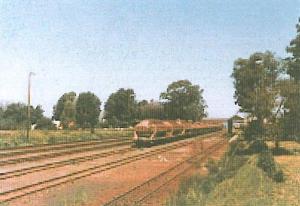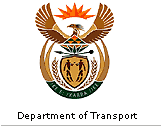 |
Pietermaritzburg-Greytown-Kranskop Branch LineThe 155 km branch to Kranskop was first opened from
Pietermaritzburg (Victoria) to New Hanover in 1899, and
was extended to Greytown in 1900. It was later extended to
Ahrens in 1913
and Kranskop in 1914. Traffic in the early days consisted
of poles and logs, wattle bark, livestock, grains and
milk. In 1928 traffic on the line totalled about
32,000 tons and there was an operating profit which,
however, was converted into a small loss after interest
charges for infrastructure
were deducted.
The line is characterised by its steep 1 in 30 grades
between Victoria yard and Greytown, and a slightly less
steep 1 in 36 grade beyond to Kranskop. The sharpest
curves have a 91 metre radius, and the numerous reverse
curves ensure that the line is expensive to operate since
train loads are low. For example, a single Class 35 diesel
locomotive can only move 350 tons, or about six loaded
timber wagons. For this reason, four such locomotives are
usually operated on trains of 1,380 tons, or 24 loaded gum
pulpwood wagons. The line has an 18,5 ton axle load.
Traffic has grown considerably in recent years because of
the afforestation of land adjacent to or near to the
railway.
During the 2002/2003 financial year some 313,000
tons of pulpwood, treated timber, charcoal and wattle bark
extract originated from stations on
the line.
In addition, a further 180,000 tons of traffic originated
on the three branches along the line. This included about
80,000 tons of bulk sugar destined for a major
distribution
centre in Gauteng.
A small amount of inbound traffic was received, bringing
the total to slightly over 500,000 tons. By 2005/2006, on-
line generated traffic had fallen to about
230,000 tons, due mainly to a drop in pulpwood traffic.
Branch traffic amounted to about 170,000 tons. A reason
for the quite dramatic drop in pulpwood traffic is that a
new wood chipping facility in Durban had come on stream,
and a significant slice of rail traffic was diverted to
road because of unfavourable tariffs.
Nevertheless, there is considerable scope for rail to
recapture lost traffic, and this should be the goal of the
current railway administration.

Greytown yard showing loaded ST Wagons of pulpwood
|
For Details of
Volumes and Commodities Received
and Forwarded [Table 6]CLICK HERE
|
 |



